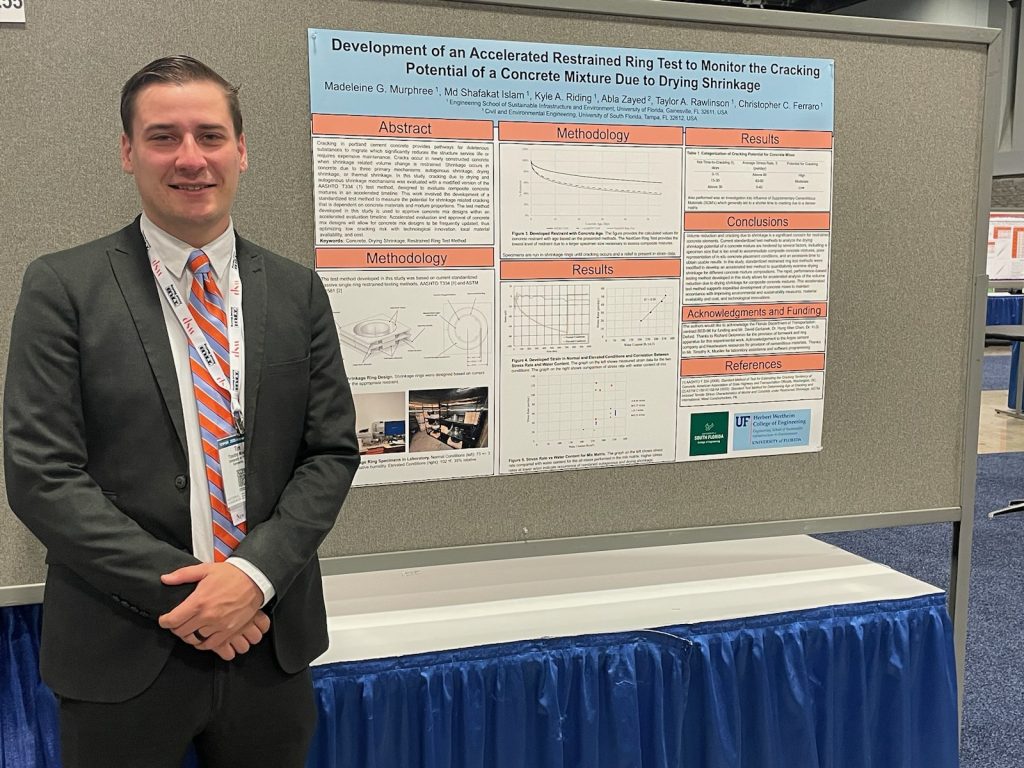By Ines Aviles-Spadoni, M.S., M.A., UFTI Research Coordinator/Communications

University of Florida Associate Professor Chris Ferraro attended the annual Transportation Research Board (TRB) meeting in Washington, D.C., in January, serving as a panelist during a workshop on Low-Carbon Concrete. Ferraro also achieved a professional milestone and was elected a member of the American Concrete Institute’s (ACI) Committee on Nominations on Jan. 20.
The panel, titled “Toward Low-Carbon Concrete,” included experts from around the world to discuss advancements in reducing the environmental impact of concrete, a critical material in transportation infrastructure.
“In the fall of 2024, the American Concrete Institute (ACI) published the Low-Carbon Concrete Code—a groundbreaking standard that establishes provisions for low-carbon structural concrete,” said Ferraro, who is also the current vice chair of the ACI Code 323 Low-Carbon Code Committee.
What is low-carbon concrete? It is an emerging technology that uses supplementary cementitious materials such as limestone calcinated clays to reduce environmental impact. Concrete—a mixture of cement, sand, and gravel—is used widely in buildings and infrastructure worldwide, but producing it is also responsible for about 8% of global emissions.
What accounts for the emissions? Cement is produced by quarrying limestone, rocks, sand, and clay. These elements are mixed, ground into powder, and heated at high temperatures in a kiln. The heat creates a chemical reaction that turns the limestone mixture into lime, known as “clinker.” It is this process that generates 90% of carbon emissions from concrete.
Ferraro spoke about the incredible potential of low-carbon concrete, including the importance of innovation in novel materials, regulatory and policy challenges, codes, and standards for promoting such transformative practices in the cement industry.
“We had a very lively session,” Ferraro said. “I was glad to contribute to industry initiatives focused on developing low-carbon concrete strategies that promote sustainable and innovative ‘green’ solutions.”
Ferraro’s role at TRB, serving as a panelist and vice chair of TRB’s ACI CODE 323 Low-Carbon Committee, including being elected to the ACI’s Committee on Nominations, reflects his leadership and expertise in the area of concrete science.


